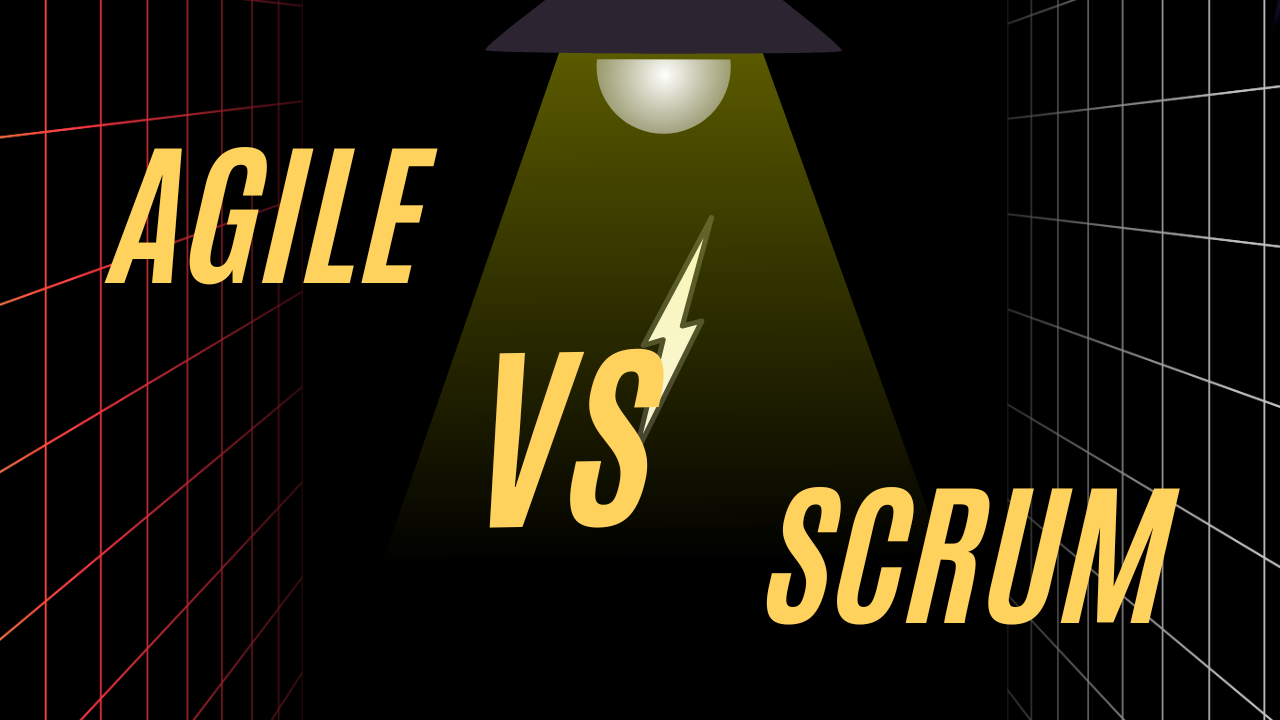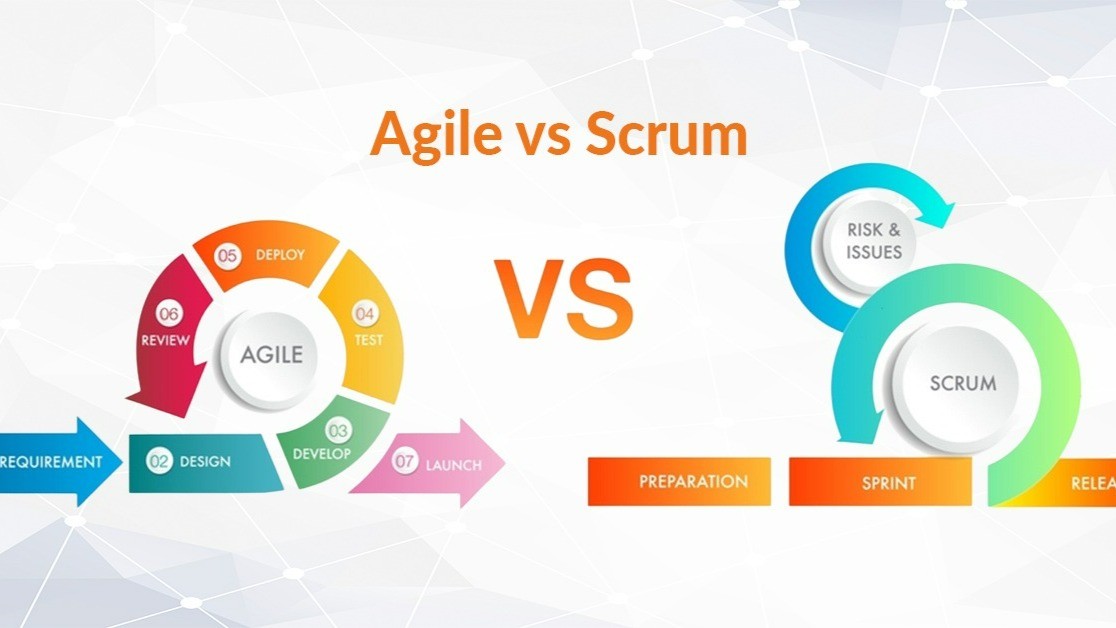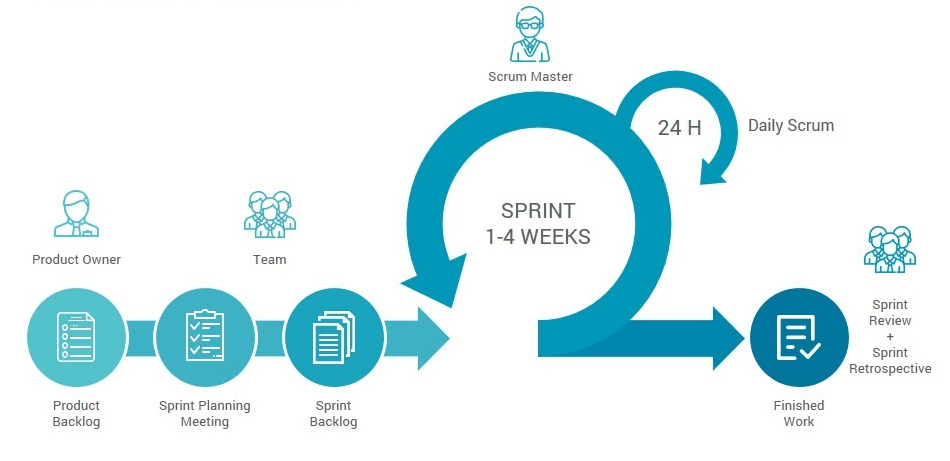- 20-05-2025
- Agile & Scrum
SAFe Practice Consul...
SAFe Practice Consultant (SPC): Roles and ResponsibilitiesIntroduction...
 Get additional 10% off this Christmas!
Get additional 10% off this Christmas!
Enroll by 10th Dec
Promo Code XMAS10

Agile vs Scrum: Essential Distinctions, Advantages, and Selection Guidance
Explore the route to achievement with CSM Certification from Centuera. Master Agile principles, enhance project efficiency, and secure a competitive advantage in the job market. Obtain your certification today!
Whether you are a novice in software development or possess some experience in the domain, you are likely acquainted with the concepts of Agile and Scrum. Although these two process management methodologies exhibit similar strategies, there are significant distinctions that are beneficial to understand if you are aiming for a career in software development, project management, or both.
To gain a clearer insight into Agile versus Scrum, it is advantageous to delve deeper into the workings of each methodology. But first, what do Agile and Scrum signify?
What Constitutes an Agile Methodology?
Initially, what defines an Agile environment, and what does it entail? An Agile methodology represents a collaborative and adaptable approach that teams generally embrace to execute tasks with greater efficiency. This project management methodology, prevalent in software development, often provides a more intuitive means of keeping cross-functional team members organized and focused. Through Agile, teams engage in various iterations of a project, which are subsequently arranged into a prioritized backlog informed by end-user feedback.
The fundamental principle underlying Agile methodology is to maintain sufficient flexibility to implement changes as necessary. To achieve this, a project manager designates a specific duration for each phase of a software project. The origins of this methodology are elaborated upon, including its 12 core principles, in the Agile Manifesto for Software Development.
What is Scrum Methodology?
Next, what does a Scrum environment entail? Interestingly, Scrum methodology is an Agile framework designed to enhance collaboration and efficiency in software development and testing. Projects developed using Scrum are divided into small increments known as sprints, which include three main components: product backlogs, sprint backlogs, and sprint goals. During each sprint, a specific function is identified, developed, and tested. Depending on the project's complexity, each sprint typically lasts between two to three weeks. If any business requirements change that necessitate a code modification, it is more efficient to locate it in the sprint backlog rather than restart the entire software development lifecycle, as is the case with a Waterfall methodology.
Within this framework, the Scrum Master is tasked with ensuring the success of each project. They must keep every team member focused, address and resolve any issues that arise, verify that the team adheres to Scrum methodologies, and uphold deadlines.
Also Read: Guide to Scrum Master Career Path

Difference Between Agile and Scrum
The main distinction between Agile and Scrum is that Agile represents a project management philosophy that incorporates a core set of values or principles, while Scrum is a specific Agile methodology employed to manage a project.
The essential difference between Agile and Scrum is that Scrum is a highly effective methodology for delivering software to customers, whereas Agile is a broader philosophy regarding the delivery of software to customers.
| Aspect | Agile | Scrum |
| Definition | Agile is a cooperative and adaptable methodology employed to effectively complete tasks, especially in the realm of software development. | Scrum is an Agile framework designed to enhance collaboration and efficiency in software development by utilizing sprints. |
| Iterative Approach | Agile teams operate on multiple iterations of a project, structured into a prioritized backlog that reflects end-user feedback. | Scrum breaks down projects into smaller increments known as sprints, where each sprint includes product backlogs, sprint backlogs, and specific sprint goals. |
| Project Flexibility | Agile focuses on flexibility and adaptability, enabling modifications as required during the course of the project. | Scrum offers a more structured approach and is less adaptable, which makes it suitable for individuals focused on achieving rapid results. |
| Software Delivery Frequency | Agile provides software on a regular basis for feedback, facilitating ongoing iterations of both development and testing. | Scrum provides software at the conclusion of each development sprint. |
| Suitable Team Size | Agile is ideal for smaller teams and for individuals who value simplicity in both design and execution. | Scrum is better suited for innovative and experimental methods. |
| Relationship | Scrum is a distinct Agile methodology designed to streamline project management. | Agile represents a comprehensive philosophy regarding the delivery of software to clients. |
| Comparison to Kanban | Both Agile and Scrum have commonalities with Kanban, which is another Agile framework utilized in marketing. | Scrum utilizes specific roles for its team members, whereas Kanban promotes equal collaboration among all participants. |
| Process Flow and Flexibility | Scrum employs specific roles and follows strict sprints, permitting minimal alterations throughout a project. | Kanban offers greater flexibility during a project and is not as rigid. |
Agile and Scrum are fundamentally different; Scrum is a methodology that software development teams adhere to, while Agile represents a philosophy regarding the delivery of software to customers.
Scrum serves as an Agile process focused on delivering business value in the shortest timeframe possible, whereas Agile emphasizes continuous development and testing iterations.
In Agile methodology, software is regularly delivered for feedback, while in Scrum methodology, software is released following each development sprint.
Agile and Scrum utilize similar methods such as collaborative iterations for good reason: Scrum is an Agile approach. However, despite both involving incremental project builds, they possess distinct differences. Scrum is a more structured method with limited flexibility for changes, making it ideal for those who need to achieve results swiftly. In contrast, Agile is better suited for smaller teams and those who favor a more straightforward design and execution, while Scrum is more commonly applied in creative and experimental contexts.
To summarize, Scrum is always Agile, but Agile does not always equate to Scrum. This indicates that Scrum will include the methodologies of Agile, but Agile may not encompass all the characteristics of Scrum.

Scrum vs. Kanban: Differences and Similarities
When discussing Agile versus Scrum, it is also beneficial to comprehend how Kanban fits into the overall framework. The Kanban framework, which is also Agile, is frequently utilized in marketing. It serves as a workflow management method and scheduling system that is often compared to Scrum.
Both Scrum and Kanban aim to eliminate waste through iterative work systems. They rely on process flows and are both pull systems, meaning team members must complete specific tasks before they can take on new ones.
A key distinction between the two frameworks is that Scrum assigns specific roles to team members, whereas Kanban promotes equal participation among all team members. Additionally, Scrum adheres to fixed sprints to evaluate project deliverables, limiting the scope for changes, while Kanban allows for greater adaptability as required throughout a project.
Conclusion
In order to remain competitive in today’s fast-paced technology landscape, companies are rapidly recruiting Agile developers and Scrum experts—and they are performing exceptionally well. If you aspire to establish a successful career in Agile or Scrum, proper training is crucial. The right courses not only equip you with the skills needed to excel in your role but also, with the appropriate certifications, can help you distinguish yourself from others in the field.
If you aim to become a certified Scrum Master, consider Centuera's Agile and Scrum programs, where you will gain an in-depth understanding of this widely adopted software development methodology.
Enhance your skills with our popular Agile and Scrum courses and certifications:
Kickstart your career as a software developer by enrolling in one—or both—of these programs today!
FAQs
1. What distinguishes Scrum from Agile?
Agile is a development methodology characterized by an iterative and incremental approach. Scrum is a specific implementation of Agile methodology that delivers incremental changes in a timely manner.
2. Is Scrum a component of Agile?
Yes, Scrum is indeed a component of Agile. Agile serves as the overarching project management approach, while Scrum is the method employed to execute it.
3. Is a sprint associated with Scrum or Agile?
A sprint refers to a designated timeframe during which a specific amount of work is to be completed on a project. It is an integral part of the Agile methodology.
SAFe Practice Consultant (SPC): Roles and ResponsibilitiesIntroduction...
Steps to Becoming an SPCIf you have successfully finished the SAFe® co...
Agile vs Scrum: Essential Distinctions, Advantages, and Selection Guid...